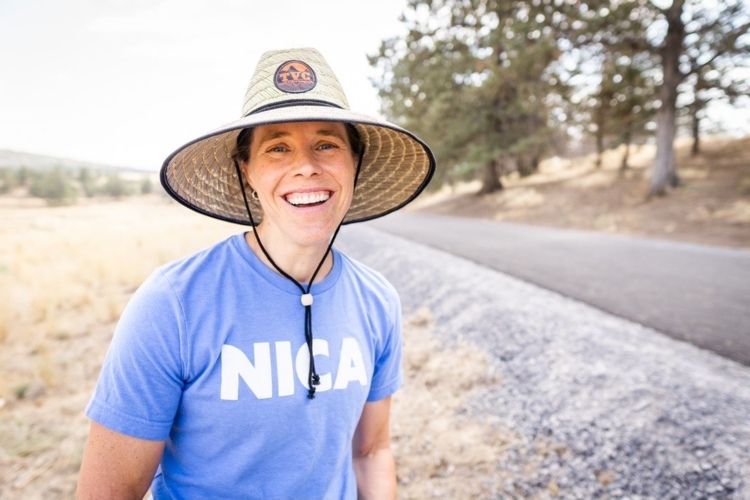
The BikeYoke Revive is beloved by mountain bikers for its quality construction, serviceability, and reliability. The brand notes that the third revision, announced today, is pretty much the same design as the original Revive that Singletracks reviewed in 2017, and the latest changes are mostly focused on giving riders a bit more travel. I squeezed in a couple of 20-mile rides on the BikeYoke Revive v3 dropper post ahead of the launch, and here’s what’s new.
BikeYoke Revive v3 key specs
- Travel: 125, 160, 185, or 213mm; travel reduction in 5mm increments (213mm tested)
- Diameter: 30.9, 31.6, or 34.9mm (30.9mm tested)
- Weight: 605g as tested (30.9x213mm) not including lever or cable
- Price: $400 post, $65 remote
- Buy from bikeyoke.com and other online retailers


Before getting into what’s new, it’s worth mentioning that Revive 1.0 and 2.0 posts can be retrofitted to take advantage of all of these updates. Not only that, if you need to move a Revive post from a bike with a 30.9mm seat tube to one with a 31.6mm seat tube or vice versa, BikeYoke sells lower tubes that make the swap possible.
A lot of mountain bikers are looking for more travel out of their dropper post, though there’s always a limit based on both frame and rider dimensions. BikeYoke knows that millimeters matter, so with that in mind, they worked to reduce the stack height on the Revive by 5mm and slashed the length of the actuator by 10mm. The Revive is now travel adjustable as well with reducing spacers available in 5mm increments, allowing riders to maximize the fit if a post is too long for the legs.

Another interesting feature is the ability to rotate the foot of the post where the actuator sits. This potentially allows you to move the foot out of the way of a frame bolt or pivot point that might be impacting the seat tube at the bottom of the post. Clearly, every little bit counts.
Aside from the travel-maximizing updates, BikeYoke has also made the lever easier to operate. Specifically, the actuator uses a new linkage, and the remote (available separately) uses an “ultra-slick” cable and housing. I’ve found that the actuators on many dropper posts are difficult to toggle by hand, requiring a screwdriver or another tool to pull them down for installation or repair. The BikeYoke Revive requires very little force to actuate, and at the same time, it’s not overly sensitive to accidental activation.


On the bike
Overall, the BikeYoke Revive is simple to install, barring any internal cable-related challenges. This is the second time I’ve installed a new post and accidentally let the cable housing that was already installed slip down inside the seat tube. I always add a new cable with a new post but try to reuse the housing because routing it through the frame is such a hassle and involves removing the bottom bracket.
I like the seat clamp on the BikeYoke Revive, but I’m not a fan of the Torx heads on the bolts. (I’m sure someone can tell me why Torx is a better choice than hex for seat clamp bolts in the comments below.) Really it’s just the front of the clamp where the Torx bolt is annoying due to a lack of clearance for my T-handle tool. I would prefer a hex bolt here since a hex wrench with a ball-end tip makes the job go a little quicker. The seat clamp bolts need just 6mm of torque to provide a secure grip on the saddle rails.
Share your BikeYoke Revive v3 review
I found there was a tiny amount of side-to-side play in the post as soon as I installed it. Looking back at Aaron’s review of the v1 BikeYoke Revive, he noted the same thing. The amount of rotation has to be less than a degree, and while I haven’t had the post long enough to say whether it gets worse over time, Aaron said he didn’t develop any additional play during his long-term test.
The BikeYoke Revive reacts quickly on the trail and delivers a confident “thunk” as it returns to full extension. Some posts start to feel bouncy over time, but not the BikeYoke Revive. The key is the pressure relief valve that releases any air that mixes with oil inside the post. I’ve already “revived” my post a couple of times, and it’s feeling as solid as a rock.
Pros and cons of BikeYoke Revive v3
Pros
- Ultra high quality design and construction
- Maximizes available travel
- Serviceable and rebuildable at home with good parts availability
Cons
- More expensive than competing mechanical posts
- A little side-to-side play out of the box
Bottom line
Fans of the BikeYoke Revive will be stoked about v3 for its ability to run a longer-travel post and the improved lever action. And unlike product updates from other brands, there’s no FOMO or buyer’s remorse since retrofits are available for existing Revive posts.



















